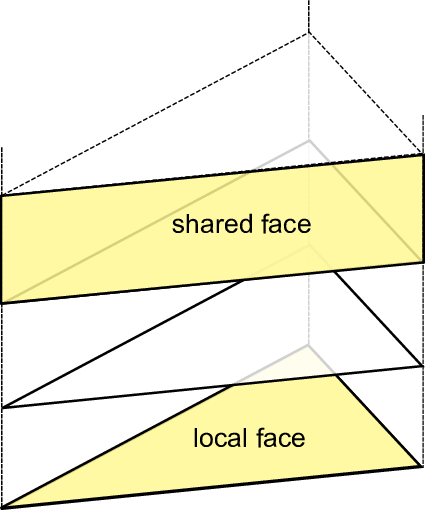
With the shallow water equations, a simplification of an originally three-dimensional model is used. This allows computationally more efficient simulations with results close to the three-dimensional formulation. This is not possible in all cases such as weather and climate simulations. Considering e.g. the model used by the Deutscher Wetter Dienst (DWD), a multi-layer discretization in the vertical direction is used to simulate three-dimensional effects.
We also extended our framework with such a multi-layer approach. Here, we present the multi-layer simulation of the Euler equation. A constant number of layers is assumed in each grid cell. The two-dimensional cell-data storage is then used to store a pile of three-dimensional cells. We introduce a new terminology for this extension: the three-dimensional cells are further denoted as volumes. Edges are further described as adjacent faces and the shared interfaces of two piled cells are named local face, see Fig. 6.13.
For a basic 3D DG simulation, the following major building blocks of a multi-layer simulation are required:
We also have to compute the time step size for the local faces. This would require an extension of the framework with additional interfaces. However, we overcome this by utilization of (a) the cluster-local user data to temporarily store flux updates and (b) the kernel interfaces for storing edge communication data:
Hence, we can use one kernel handler, e.g. for the hypotenuse (cell_to_hyp). This allows us to compute fluxes for the local faces.
This extension finally leads to the capability of handling multi-layered simulations transparently to the framework which was originally only developed for two-dimensional simulations.